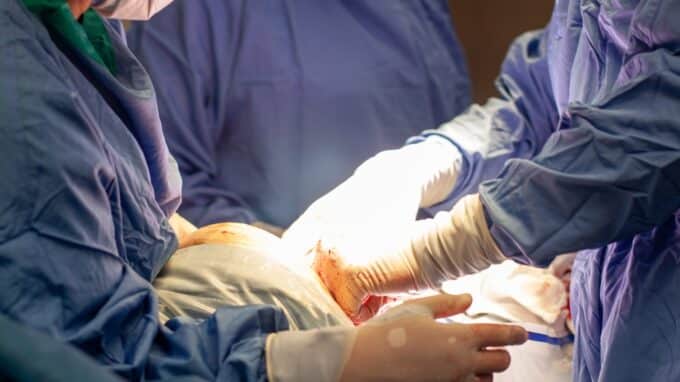Many factors can influence fertility. Could the type of birth also play a role? Research shows that women who had their previous pregnancy delivered via cesarean section took longer to become pregnant again. In addition, women who had been trying to conceive for a long time were more likely to have a cesarean section. The authors concluded that differences in time spent trying to conceive were unlikely to be due to the surgical procedure itself.
Previous studies have shown that women who had a cesarean section tended to have more problems having a baby than women who had a normal, vaginal birth. Many of these studies used intervals between pregnancies to measure women’s fertility. However, measuring the interval between pregnancies cannot distinguish between voluntary and involuntary delay in pregnancy.
Women Who Had a Cesarean Section Were 10 Percent Less Likely to Become Pregnant Again
Using data from the Norwegian Mother-Father-Child Cohort Study (MoBa), which is linked to the Norwegian Medical Birth Register (MBRN), researchers at the University of Bergen, led by Yeneabeba Sima, assessed women’s fertility. The MoBa questionnaire asked whether women had planned their pregnancies or not. For those who were actively trying to have a child, researchers looked at how long it took them to get pregnant. If they had tried for a year or more before becoming pregnant, the women were considered to have reduced fertility. Researchers examined differences in time spent trying to conceive among 42,379 MoBa participants, all of whom had at least one previous birth registered in MBRN.
The results suggest that women who had a previous cesarean section were 10 percent less likely to become pregnant during a given menstrual cycle, compared to women who had a previous vaginal delivery. The researchers also examined the inverse association between reduced fertility and later cesarean delivery. Of the 74,025 MoBa participants, 11 percent said they had tried for more than a year before they were able to have offspring. Researchers found that women who took a year or longer to conceive were 21 percent more likely to have a cesarean delivery than women who took less than 12 months to conceive.
The Mother’s Underlying Diseases Could be Responsible
In the study, women with problems conceiving also had a higher prevalence of pregnancy complications. There is also a higher prevalence of chronic health problems such as diabetes mellitus and high blood pressure in these women. However, the increased risk of a cesarean section also existed for women who did not have these health problems. The associations between cesarean section and reduced fertility may not be causal. Previous studies have concluded that reduced fertility after a cesarean section could be a side effect of the surgical procedure. However, researchers note that common underlying risk factors could contribute to both reduced fertility and cesarean delivery. Maternal stress could be an explanation linking problems conceiving with an increased risk of labor problems, ultimately leading to a higher likelihood of a cesarean section.
The results of the research suggest that the observed reduced ability to conceive after a cesarean section may be related to underlying maternal diseases that were not recorded in the experts’ data or have not yet become clinically apparent, and that the surgical procedure may not directly address this pathway influenced.





